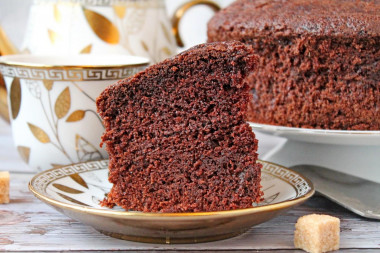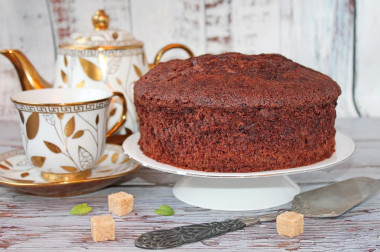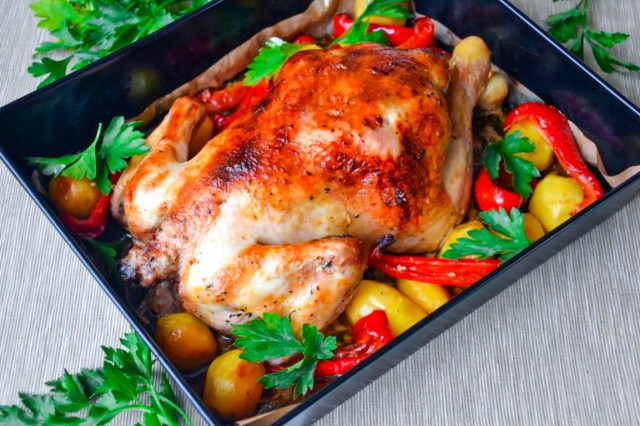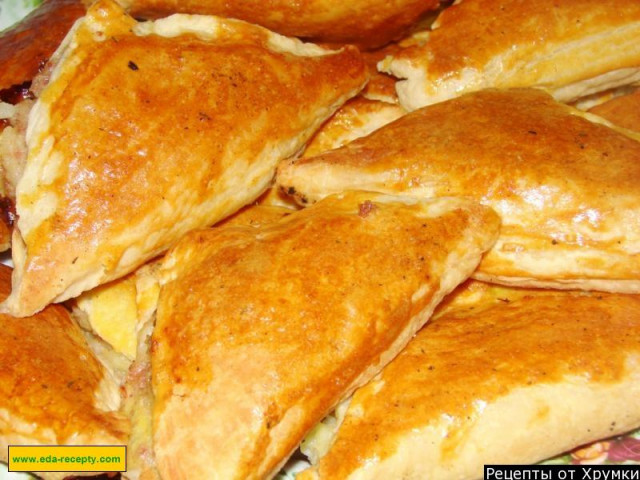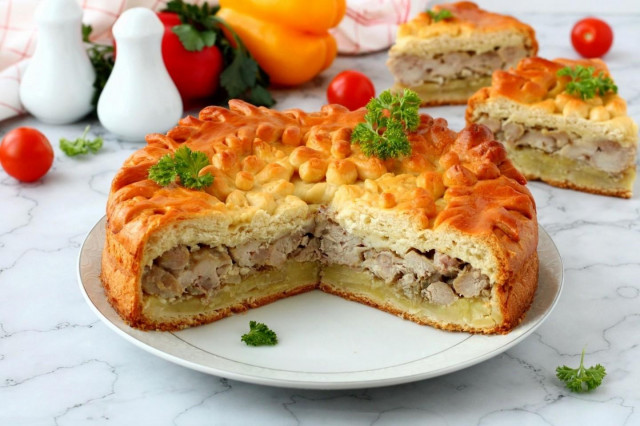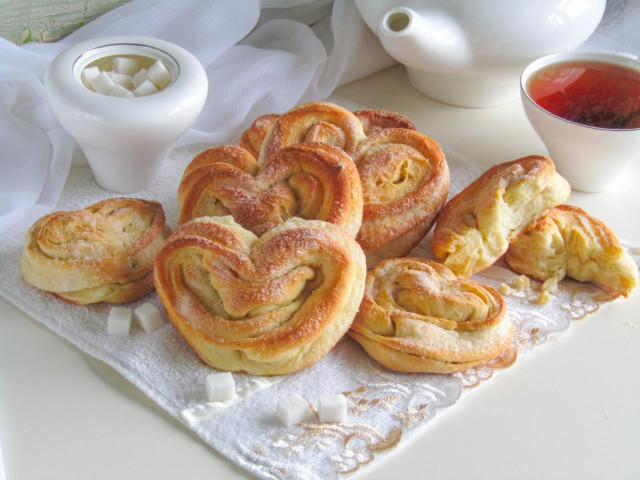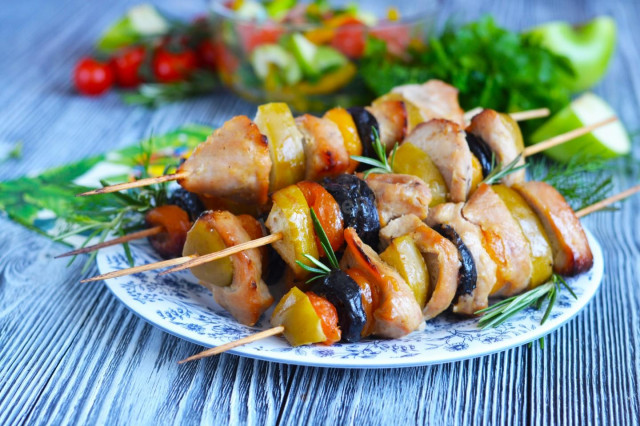Composition / ingredients
Step-by-step cooking
Step 1:

How to make a chocolate sponge cake on boiling water? First, prepare all the necessary ingredients.
Step 2:
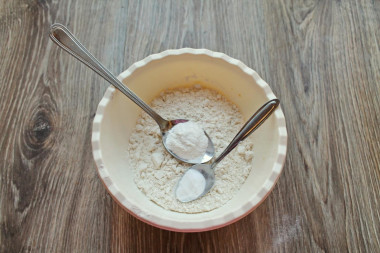
Flour, best of all "Extra" or "Premium ", mix with baking powder and soda. Mix everything and sift through a fine sieve into a bowl. This will help get rid of garbage, if there was one, and saturate the flour with oxygen, which will make the sponge cake more magnificent.
Step 3:
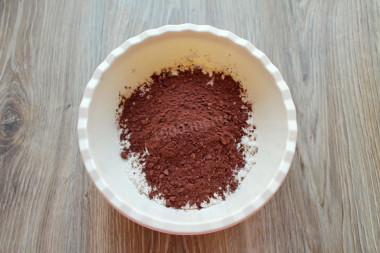
Add cocoa to a bowl with flour and mix. Cocoa is best taken pure, of the highest grade. Mixtures for making hot chocolate or ready-made cocoa for a drink are not suitable. It already has sugar in it, and the color will turn out faded and not appetizing.
Step 4:
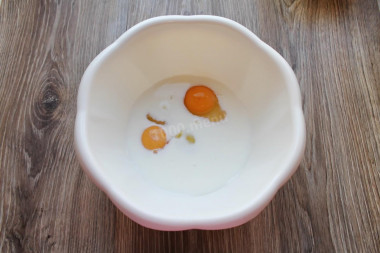
Wash the eggs from the dirt even if it is not visible at first glance. In another bowl, pour the milk, at room temperature, and break the eggs. The eggs need to be taken out in advance so that they are at room temperature, then the biscuit will turn out more lush.
Step 5:
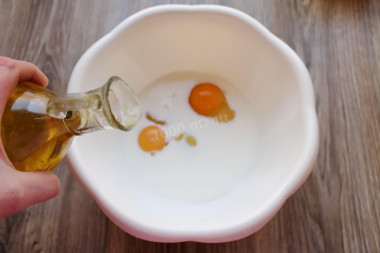
Pour vegetable oil into a bowl with milk and eggs. Mix everything well with a whisk until smooth. Take refined butter so that its taste does not prevail in the finished biscuit. You can take any vegetable oil at your discretion, but do not forget that many of them have a very strong aroma.
Step 6:
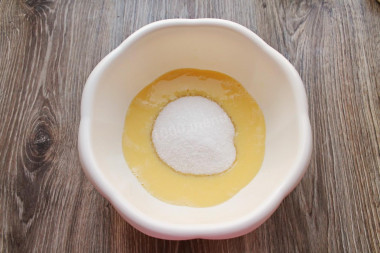
Add sugar and salt to the bowl and mix everything well.
Step 7:
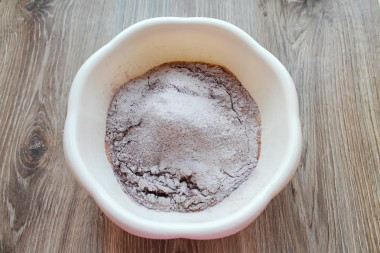
Once again sift the flour mass into a bowl with the liquid part and mix until smooth, so that there are no lumps.
Step 8:
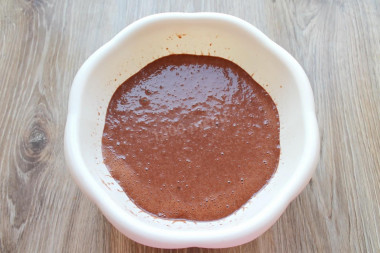
Continuing to stir, pour in boiling water and stir until smooth. The dough turns out to be quite liquid, but that's how it should be.
Step 9:
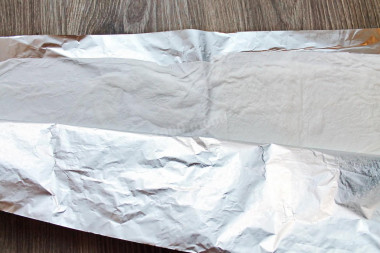
So that the finished biscuit after baking does not turn out to be a "hump" there is a little trick. Cut the baking foil and a paper towel slightly larger than the mold in which you will bake the biscuit. Wet the towel and lay it on half the width of the foil. Fold the foil in half, covering the paper towel, tucking the edges.
Step 10:

Grease a baking dish with a diameter of 20 centimeters with vegetable oil and sprinkle with flour. Cut a circle out of baking paper and place it on the bottom of the mold. Wrap the prepared foil around the mold and secure it.
Step 11:
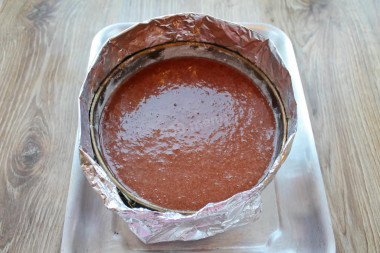
Pour the biscuit dough into the mold and tap a little on the table to get rid of air bubbles that can spoil the finished biscuit.
Step 12:
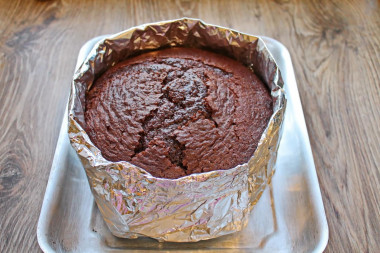
Put in a hot oven and bake at 180 degrees. The time can be from 30 minutes to one hour, it all depends on the diameter of the mold and the oven itself. Bake the biscuit until the skewer is dry when removed, if you pierce the biscuit with it. Remove the sponge cake from the oven and leave in the mold for 10 minutes. Then remove it from the mold and leave it on the grill until it cools completely.
Step 13:

It can simply be served on the table, cut into pieces. Or cut into cakes, smear with cream and make a gorgeous cake. Enjoy your meal.
When the top layer of baking is slightly browned, check it for readiness: pierce it with a wooden skewer in several places, if the skewer comes out dry, then the mold (or baking sheet) can be taken out of the oven.
Keep in mind that everyone's ovens are different. The temperature and cooking time may differ from those specified in the recipe. To make any baked dish successful, use useful information about the features of ovens !
If you don't want to add baking powder to the dough, you can replace it with soda. The proportions will be as follows: 1 teaspoon of baking powder = ½ teaspoon of soda + ¼ teaspoon of table vinegar. If the recipe specifies less / more baking powder than 1 tsp, the proportions of soda and vinegar will also be less / more than indicated, be careful.
Caloric content of the products possible in the composition of the dish
- Whole cow's milk - 68 kcal/100g
- Milk 3.5% fat content - 64 kcal/100g
- Milk 3.2% fat content - 60 kcal/100g
- Milk 1.5% fat content - 47 kcal/100g
- Concentrated milk 7.5% fat content - 140 kcal/100g
- Milk 2.5% fat content - 54 kcal/100g
- Chicken egg - 157 kcal/100g
- Egg white - 45 kcal/100g
- Egg powder - 542 kcal/100g
- Egg yolk - 352 kcal/100g
- Ostrich egg - 118 kcal/100g
- Whole durum wheat flour fortified - 333 kcal/100g
- Whole durum wheat flour universal - 364 kcal/100g
- Flour krupchatka - 348 kcal/100g
- Flour - 325 kcal/100g
- Granulated sugar - 398 kcal/100g
- Sugar - 398 kcal/100g
- Vegetable oil - 873 kcal/100g
- Cocoa powder - 374 kcal/100g
- Salt - 0 kcal/100g
- Water - 0 kcal/100g
- Baking powder dough - 79 kcal/100g
- Baking soda - 0 kcal/100g


